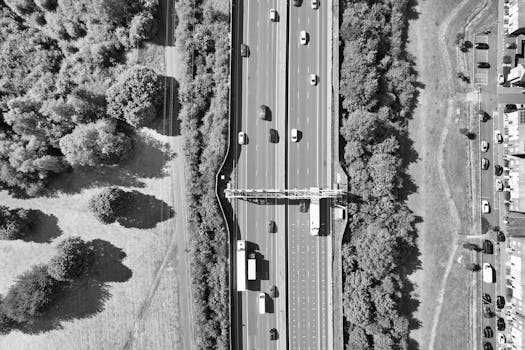
Roadworker Safety Crisis: A National Emergency Demanding Immediate Action
The alarming increase in incidents of roadworker abuse and near-misses across the nation is creating a full-blown safety crisis. From aggressive drivers to blatant disregard for work zones, the dangers faced by these essential workers are escalating at an unacceptable rate. This isn't just about statistics; it's about lives. This article delves into the causes of this rising crisis, examines the devastating consequences, and explores potential solutions to protect our road crews and ensure safer roadways for everyone.
The Growing Threat to Roadworker Safety: Statistics and Trends
Data from the National Highway Traffic Safety Administration (NHTSA), along with state-level reports, paint a stark picture. The number of roadworker fatalities and injuries due to driver negligence is trending upward, shattering previous records. Several factors contribute to this dangerous trend:
- Distracted Driving: Cell phone use, texting, and other forms of distracted driving remain leading causes of accidents in work zones. These actions drastically reduce reaction time, making it virtually impossible to avoid collisions with clearly marked and protected road crews.
- Aggressive Driving: Road rage, speeding, and reckless driving behaviors significantly increase the risk of accidents involving roadworkers. Drivers impatient with delays often disregard safety regulations, putting workers' lives in immediate danger.
- Inadequate Enforcement: Insufficient enforcement of work zone speed limits and related traffic laws allows reckless behavior to persist. Without consistent and visible police presence, drivers feel emboldened to ignore safety protocols.
- Poor Work Zone Visibility: Insufficient or poorly placed signage and lighting can lead to drivers failing to recognize work zones in time, resulting in dangerous near-misses and collisions.
- Lack of Driver Education: Public awareness campaigns and driver education programs focusing on work zone safety are crucial, yet often lacking in funding and reach. Many drivers simply lack the understanding of the risks they pose to roadworkers.
Devastating Consequences: Human Cost and Economic Impact
The human cost of roadworker abuse is immense and far-reaching. Families lose loved ones, communities mourn the loss of valuable individuals, and countless workers suffer life-altering injuries. The physical and emotional trauma extends far beyond the immediate victims. Beyond the human toll, the economic impact is substantial. Accidents result in:
- Increased Insurance Costs: Insurance premiums rise to cover the escalating costs associated with roadworker injuries and fatalities.
- Project Delays and Cost Overruns: Accidents inevitably lead to delays in road construction and maintenance projects, causing significant financial losses.
- Lost Productivity: Injured workers are unable to perform their jobs, impacting overall productivity and increasing labor costs.
- Legal Fees and Settlements: Lawsuits arising from work zone accidents impose substantial financial burdens on government agencies and private contractors.
Strategies for Improving Roadworker Safety: A Multi-pronged Approach
Addressing this escalating crisis requires a multi-pronged approach involving collaboration between government agencies, contractors, law enforcement, and the public. Effective strategies include:
- Enhanced Enforcement of Work Zone Laws: Increased police presence and stricter enforcement of speed limits and traffic regulations within work zones are essential. This includes the use of advanced technologies such as speed cameras and automated enforcement systems.
- Improved Work Zone Visibility: Investing in high-visibility signage, advanced lighting systems, and improved traffic control measures can significantly reduce accidents. This includes using more reflective clothing for workers and strategically placed barriers to create safer work areas.
- Public Awareness Campaigns: Targeted public awareness campaigns that educate drivers about the importance of work zone safety and the risks associated with distracted and aggressive driving are crucial. This includes using engaging multimedia content to reach a wider audience.
- Driver Education and Training Programs: Incorporating comprehensive work zone safety education into driver's education programs and offering refresher courses for licensed drivers are vital. This education should emphasize the human cost of reckless driving in work zones.
- Technological Advancements: Exploring and implementing new technologies like advanced driver-assistance systems (ADAS) and connected vehicle technologies can further enhance safety in work zones. These technologies can provide drivers with real-time alerts about nearby work zones and potential hazards.
- Improved Worker Training and Safety Protocols: Providing roadworkers with enhanced safety training and equipping them with the latest safety equipment and technology can also minimize risks. This includes regular refresher courses on safety procedures and emergency response protocols.
The Role of Technology in Enhancing Roadworker Safety
Technology is playing an increasingly important role in improving roadworker safety. This includes:
- Smart Work Zone Technology: Sensors and cameras can monitor traffic speed and behavior in real-time, allowing for dynamic adjustments to traffic control measures.
- Vehicle-to-Infrastructure (V2I) Communication: Connected vehicles can communicate with roadside infrastructure to alert drivers of approaching work zones and potential hazards.
- Advanced Driver-Assistance Systems (ADAS): Features like automatic emergency braking and lane departure warnings can help prevent accidents in work zones.
Conclusion: A Call to Action for Safer Roadways
The abuse of roadworkers is a national emergency demanding urgent attention. By combining enhanced enforcement, improved work zone visibility, public awareness campaigns, driver education, and technological advancements, we can significantly reduce the risks faced by these essential workers and create safer roadways for everyone. It's a shared responsibility that requires the collective effort of government agencies, contractors, law enforcement, and the public to protect the lives and well-being of our road crews. Ignoring this crisis is not an option; inaction will only lead to more tragic consequences. Let's work together to make our roads safer for everyone.




















